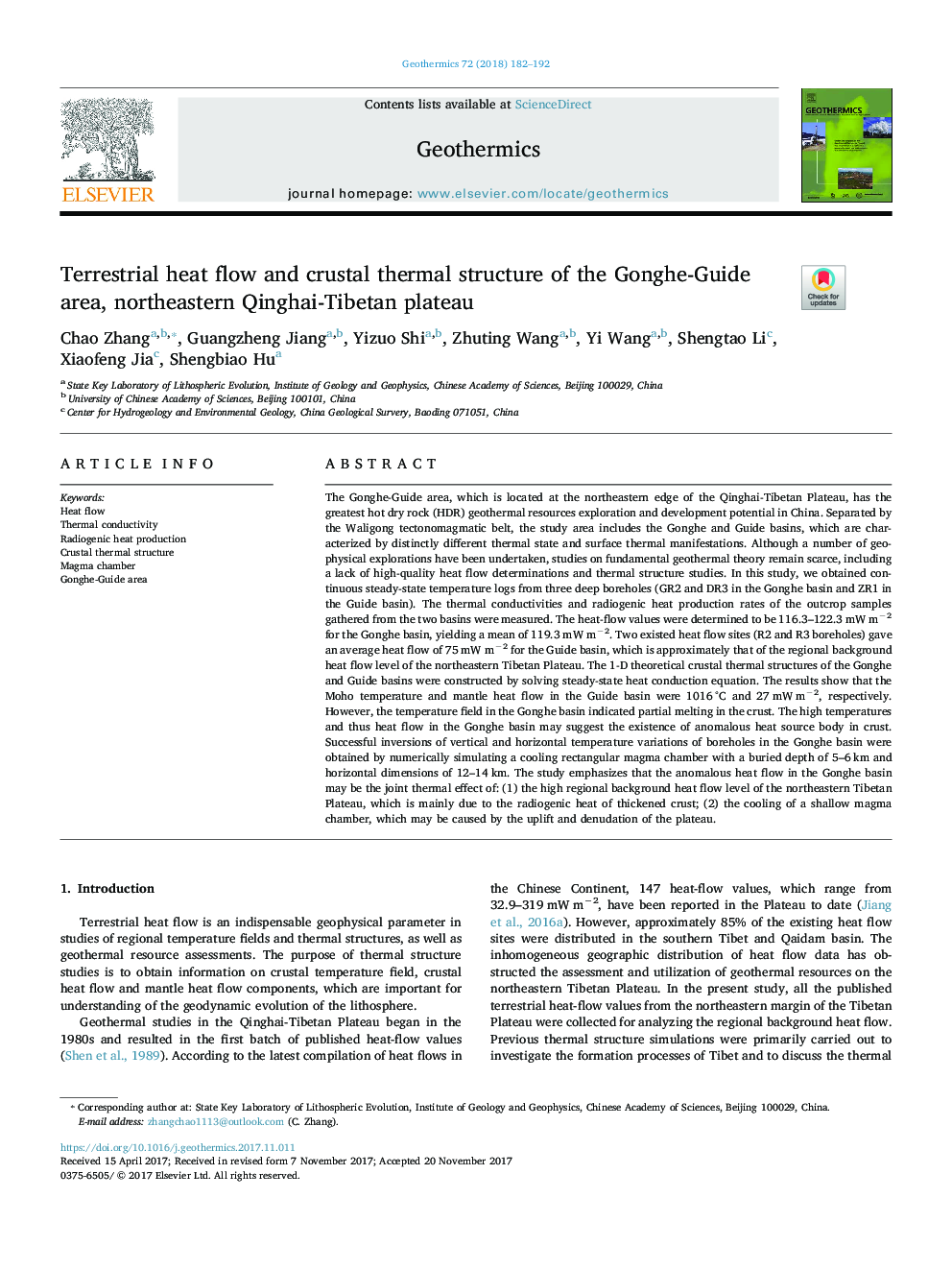| کد مقاله | کد نشریه | سال انتشار | مقاله انگلیسی | نسخه تمام متن |
|---|---|---|---|---|
| 8088602 | 1521897 | 2018 | 11 صفحه PDF | دانلود رایگان |
عنوان انگلیسی مقاله ISI
Terrestrial heat flow and crustal thermal structure of the Gonghe-Guide area, northeastern Qinghai-Tibetan plateau
دانلود مقاله + سفارش ترجمه
دانلود مقاله ISI انگلیسی
رایگان برای ایرانیان
کلمات کلیدی
موضوعات مرتبط
مهندسی و علوم پایه
علوم زمین و سیارات
ژئوشیمی و پترولوژی
پیش نمایش صفحه اول مقاله

چکیده انگلیسی
The Gonghe-Guide area, which is located at the northeastern edge of the Qinghai-Tibetan Plateau, has the greatest hot dry rock (HDR) geothermal resources exploration and development potential in China. Separated by the Waligong tectonomagmatic belt, the study area includes the Gonghe and Guide basins, which are characterized by distinctly different thermal state and surface thermal manifestations. Although a number of geophysical explorations have been undertaken, studies on fundamental geothermal theory remain scarce, including a lack of high-quality heat flow determinations and thermal structure studies. In this study, we obtained continuous steady-state temperature logs from three deep boreholes (GR2 and DR3 in the Gonghe basin and ZR1 in the Guide basin). The thermal conductivities and radiogenic heat production rates of the outcrop samples gathered from the two basins were measured. The heat-flow values were determined to be 116.3-122.3 mW mâ2 for the Gonghe basin, yielding a mean of 119.3 mW mâ2. Two existed heat flow sites (R2 and R3 boreholes) gave an average heat flow of 75 mW mâ2 for the Guide basin, which is approximately that of the regional background heat flow level of the northeastern Tibetan Plateau. The 1-D theoretical crustal thermal structures of the Gonghe and Guide basins were constructed by solving steady-state heat conduction equation. The results show that the Moho temperature and mantle heat flow in the Guide basin were 1016 °C and 27 mW mâ2, respectively. However, the temperature field in the Gonghe basin indicated partial melting in the crust. The high temperatures and thus heat flow in the Gonghe basin may suggest the existence of anomalous heat source body in crust. Successful inversions of vertical and horizontal temperature variations of boreholes in the Gonghe basin were obtained by numerically simulating a cooling rectangular magma chamber with a buried depth of 5-6 km and horizontal dimensions of 12-14 km. The study emphasizes that the anomalous heat flow in the Gonghe basin may be the joint thermal effect of: (1) the high regional background heat flow level of the northeastern Tibetan Plateau, which is mainly due to the radiogenic heat of thickened crust; (2) the cooling of a shallow magma chamber, which may be caused by the uplift and denudation of the plateau.
ناشر
Database: Elsevier - ScienceDirect (ساینس دایرکت)
Journal: Geothermics - Volume 72, March 2018, Pages 182-192
Journal: Geothermics - Volume 72, March 2018, Pages 182-192
نویسندگان
Chao Zhang, Guangzheng Jiang, Yizuo Shi, Zhuting Wang, Yi Wang, Shengtao Li, Xiaofeng Jia, Shengbiao Hu,